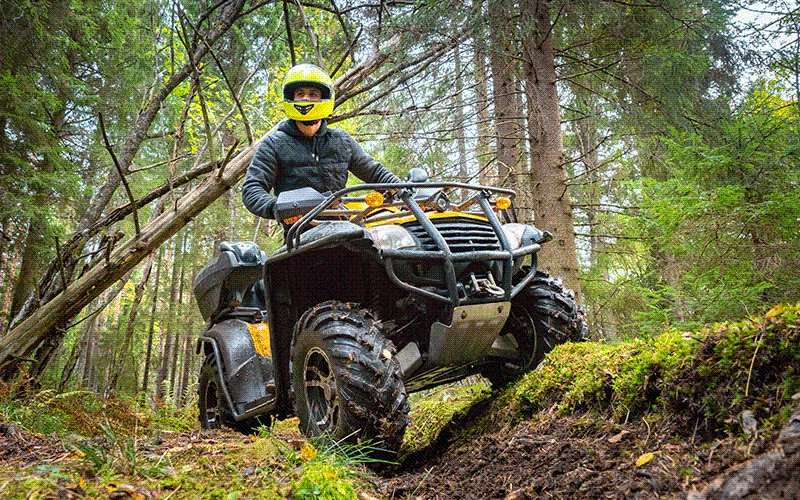
ATV Safety for Members
However, their utility also comes with inherent risks. A recent incident shared by BC Forest Safe highlights the importance of proper planning and safety measures when using ATVs in the field.
Incident Overview
An ATV was traveling slowly along an overgrown road, where brush and vegetation obstructed visibility. The vehicle’s front right tire encountered a slump in the road, causing it to roll onto its side. The operator’s leg became pinned between the ATV and a stump. Fortunately, the operator had an In-Reach device and activated its SOS button, alerting the main office, RCMP, and Search & Rescue. Emergency procedures were promptly implemented, and the operator was airlifted to safety via helicopter.
The ATV’s Rollover Protection System (ROPS) played a critical role in preventing the vehicle from rolling completely, which could have resulted in far more severe injuries.
Key Lessons for Landscaping Professionals
This incident underscores the importance of access assessment planning and proactive risk management in the use of ATVs. Below are actionable measures landscaping professionals should adopt to enhance safety when operating ATVs:
1. Develop Access Assessment Plans
Before undertaking any task involving ATV use, conduct a comprehensive evaluation of the terrain:
- Inspect the Route: Identify hazards such as overgrown vegetation, uneven surfaces, slumps, or other obstacles that could compromise stability.
- Plan for Visibility: Clear brush and vegetation where necessary to improve sightlines and reduce the risk of accidents.
- Evaluate Weather and Ground Conditions: Wet or loose soil can increase the likelihood of slumps and instability.
2. Equipment Safety Checks
Ensure that all ATVs are in optimal working condition before deployment:
- Inspect Tires: Check for proper inflation and tread depth.
- Verify ROPS: Ensure the Rollover Protection System is intact and functional.
- Test Emergency Equipment: Confirm that communication devices, such as In-Reach or satellite phones, are operational and readily accessible.
3. Emergency Preparedness
Establish and rehearse emergency response procedures:
- Equip Operators with Communication Tools: Devices like In-Reach or two-way radios are essential for remote worksites.
- Train Teams: All employees should be familiar with emergency protocols, including SOS activation and first aid basics.
- Maintain Clear Channels: Ensure the main office and local emergency services can be contacted immediately if needed.
4. Operator Training
Comprehensive training for ATV operators is vital:
- Teach Terrain Navigation: Instruct employees on how to identify and navigate hazards, including uneven ground and slopes.
- Emphasise Safe Speeds: Even slow speeds, as shown in this incident, can lead to accidents if the terrain is unstable.
- Practice Emergency Procedures: Simulate potential scenarios to build operator confidence and preparedness.
5. Leverage Technology
Modern technologies can aid in minimising risks:
- GPS Mapping Tools: Use these to pre-plan and monitor routes.
- Vehicle Enhancements: Invest in ATVs equipped with advanced safety features like ROPS and automatic stability controls.
Final Thoughts
The incident highlights the critical role of preparation and planning in ensuring the safety of landscaping professionals. By adopting robust access assessment plans, maintaining equipment, and investing in operator training, the risks associated with ATV use can be significantly reduced. Safety should never be an afterthought—it is a core component of operational success and employee well-being.
